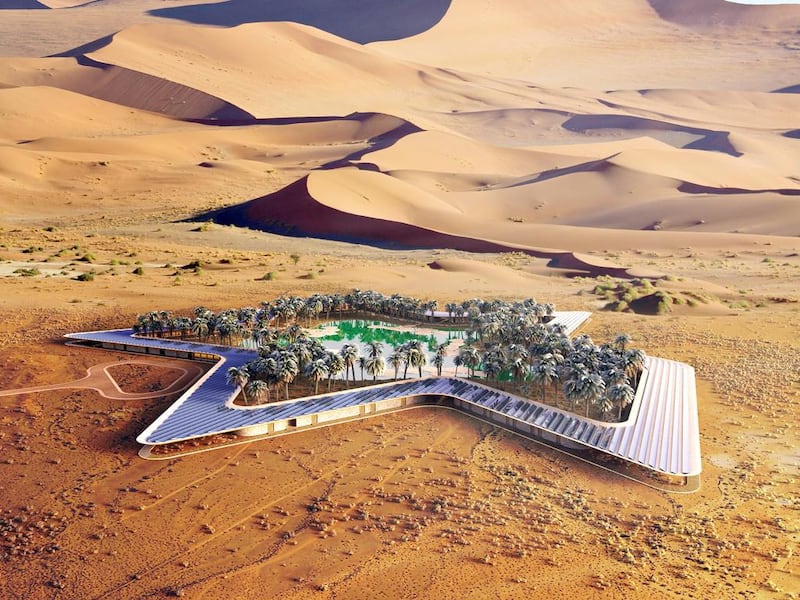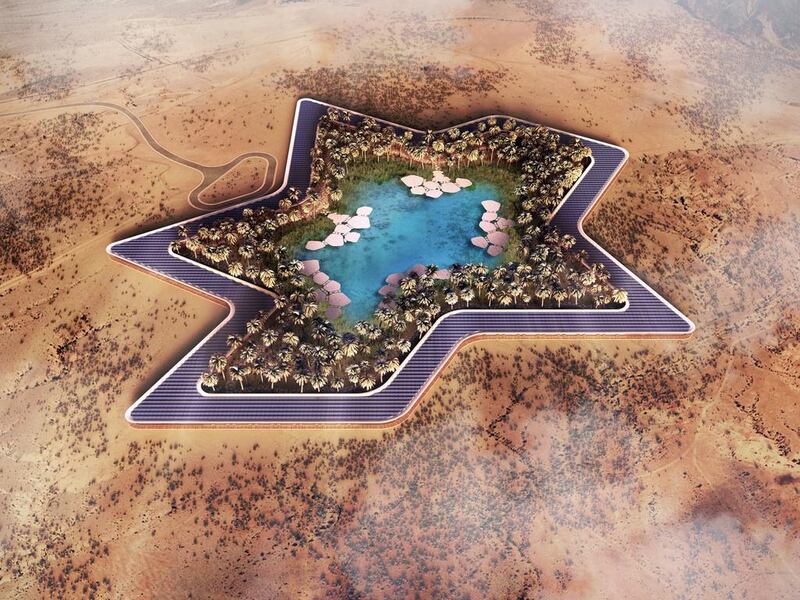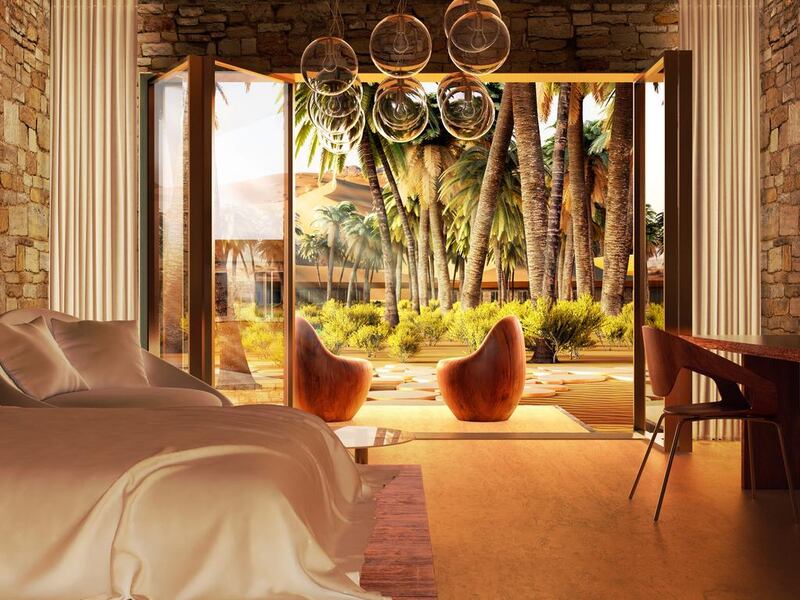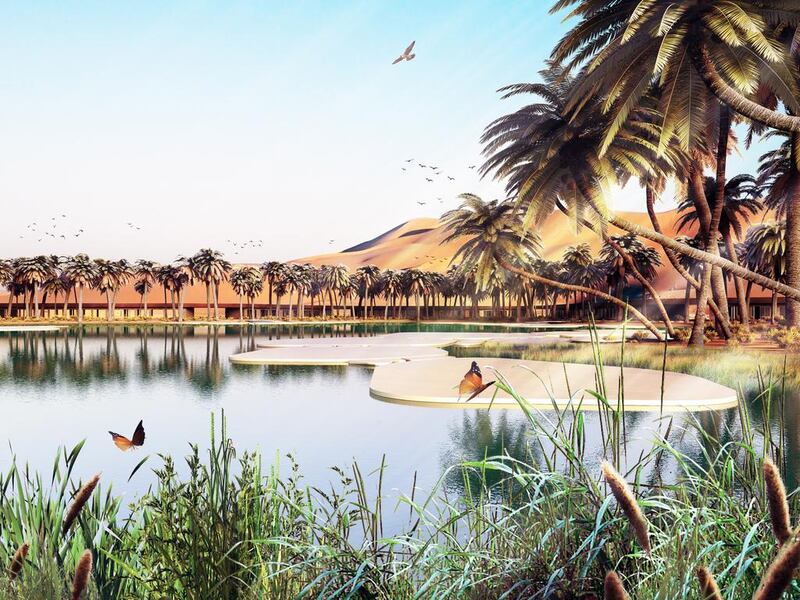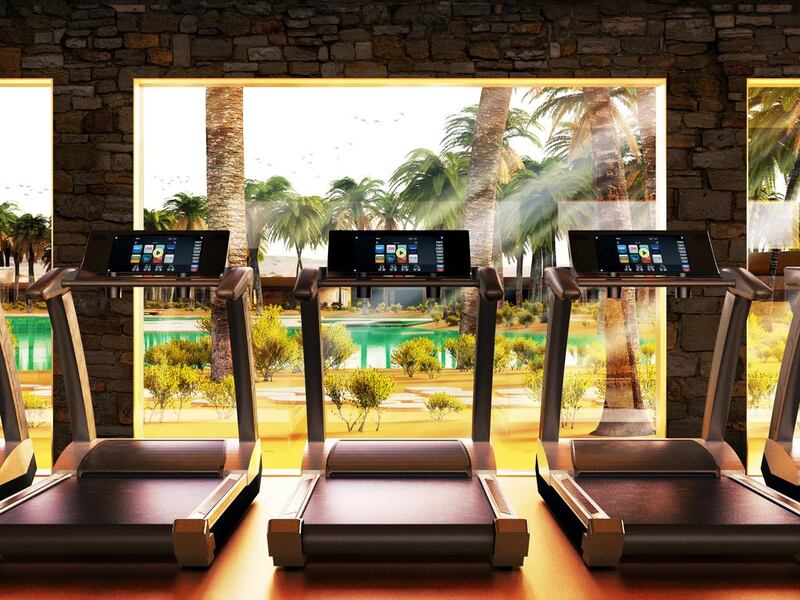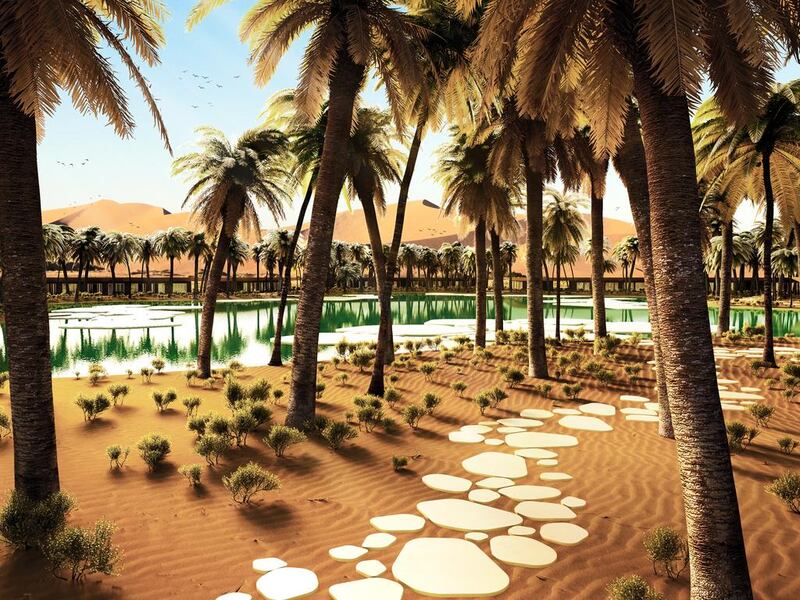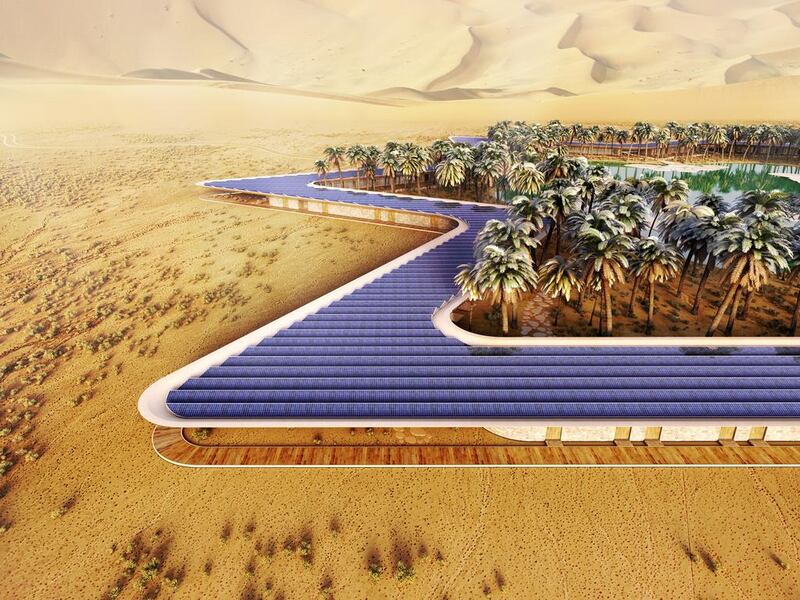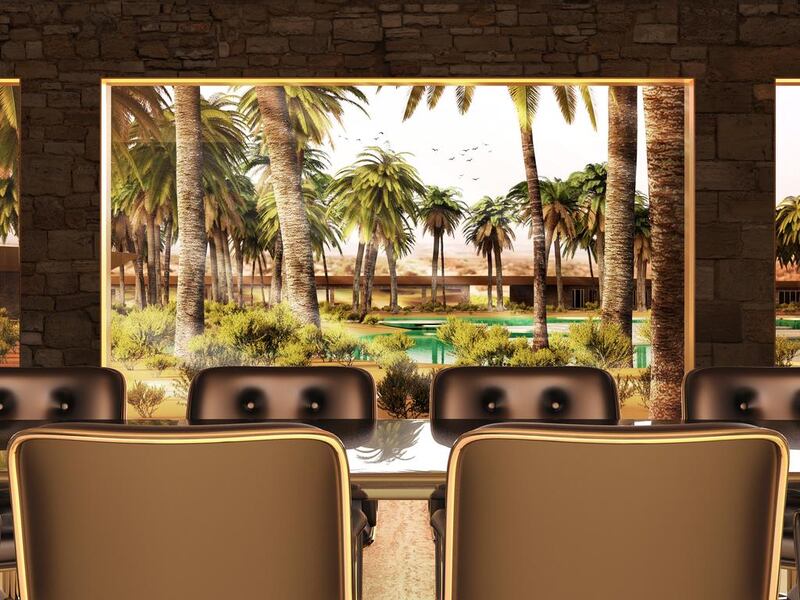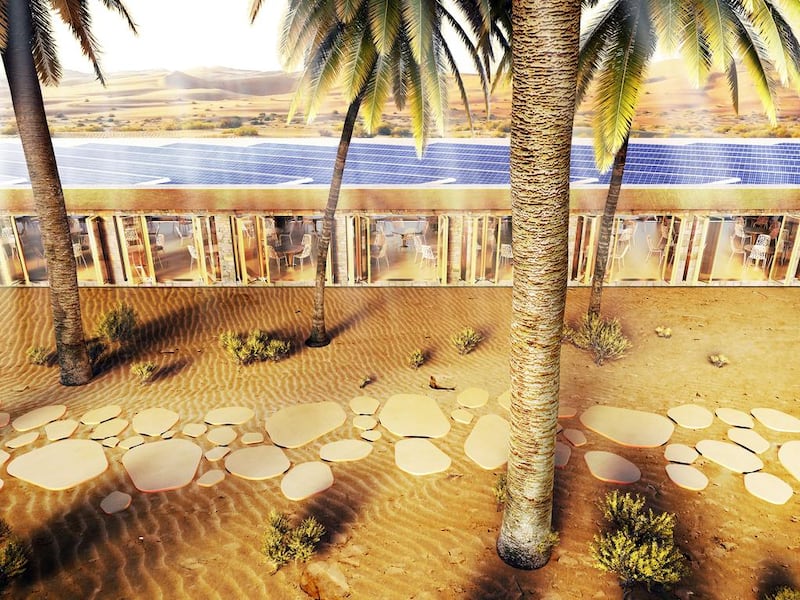The push towards environmentally responsible travel, or ecotourism, has been gaining traction since the 1990s. A 2010 study by the United Nations World Tourism Organization found this kind of travel to be “the fastest growing sector of the tourism industry, expanding globally between 20 per cent and 34 per cent per year”.
In the region, resorts such as Six Senses Zighy Bay in Oman set the standard for sustainable practices, with an emphasis on energy conservation and recycled water and waste, in a high-end, luxurious setting.
With an eye towards a more sustainable kind of tourism, the Dubai-based Eco Resort Group has announced plans to open the Oasis Eco Resort in the Liwa region, in Abu Dhabi emirate, in 2020. The group claims the resort will be “the world’s greenest”, with a design that considers water usage, health, materials, pollution, ecology and waste. Unlike Zighy Bay, all the energy needs for the Oasis will be supplied by solar panels on its star-shaped roof.
Baharash Architecture, a firm that has gained international recognition for green innovation, has been tasked with its design. Baharash Bagherian, designer and founder of Baharash Architecture, explains that it will be inspired by the UAE’s heritage. “At the very early stages of the project, we found out that we could extract groundwater using a deep well,” he says. “This gave us an opportunity to create a story around a spring, which was of critical importance to Bedouins for trade and transportation routes.”
With towering dunes, date-palm plantations and natural springs, the Liwa area is higher and cooler than many other parts of the UAE, and home to protected herds of Arabian oryx and sand gazelle.
“This is the most sustainable project we have ever worked on,” says Bagherian. The firm has already designed the first solar-powered hotel in Dubai – Hotel Indigo in Sustainable City, slated to open in 2017 – as well as a private eco retreat for a high profile Dubai resident.
When the resort is complete, a total of 84 interconnected suites will surround the spring, cooled by “passive design strategies” including extra wall insulation and triple-glazed windows. Such strategies have been practised for generations in the UAE to combat the heat. In the Al Fahidi district of Dubai, for example, thick stone walls, narrow walkways that create wind tunnels and the renowned Emirati wind towers provide some relief. While the Oasis will use more-modern adaptations for its design, it will be shaded by solar panels, similar to those in Abu Dhabi’s Masdar City.
The site aims to become an eco-destination, where tourists who want to learn about the UAE’s natural and cultural heritage can plan a stay, in the same way as, say, foodies travel to Bilbao. A wildlife conservationist and biologist will be part of the team that monitors the resort’s impact, as well as offering educational sessions to guests about how desert plants and animals have adapted to the climate.
Power for the Oasis will be generated by more than 14,500 square metres of solar panels on the roof. There are enough panels to noiselessly generate an excess of energy, which will be stored in batteries. Baharash Architecture is also exploring the option of feeding electricity back into the grid.
The resort will recycle its wastewater, manage its waste on-site, use organic waste for compost and grow some of its own vegetables in a greenhouse designed for the desert heat. Most greenhouses consume disproportionate volumes of water, which undercuts the benefit of growing on site. Naem Mazahrih, of the International Centre for Agricultural Research in the Dry Areas in Dubai, calculates that water needed for cooling a greenhouse in the hotter months exceeds the water needed for plant growth by a factor of five. To counteract this effect, at the Oasis Eco Resort, an evaporative air-conditioning system that uses 70 per cent less energy than conventional cooling will be installed.
Officially, the resort aims to be a zero-emission zone, similar to Sustainable City (the latter’s second phase was designed by Baharash). Guests will arrive at the resort by remote-controlled, driverless electric car or bus. If all goes according to plan, an electric shuttle will run from Abu Dhabi International Airport and possibly other points in the UAE. Those who drive a car to Liwa will park in a designated lot, then take a shuttle. Food will be sourced from Liwa farmers, with priority given to locally made products.
The main challenge facing the Oasis has to do with the long-term availability of water from the central spring, according to the firm. It will be used for drinking water, growing food for guests, fish farming and other recreational activities. By extracting as little water as possible and reusing “grey” water (everything used on-site, except that from toilets), the developers hope to minimise the spring’s depletion. Landscaping will capitalise on local plants and trees that require little water.
With Expo 2020 in sight, sustainability has taken on increasing priority in the UAE, despite the nation’s poor rating – third in the world – for per capita energy and water consumption. Resorts such as the Oasis will play a significant role in the transition.
“I believe that the UAE needs to nurture entrepreneurial spirit from the bottom up, by investing in young companies that offer innovative products or services in various sectors, such as health, water, agriculture, tourism or renewable energy, for example,” says Bagherian. “This inward investment will create more green jobs and will most likely result in a more sustainable UAE.”
homes@thenational.ae
